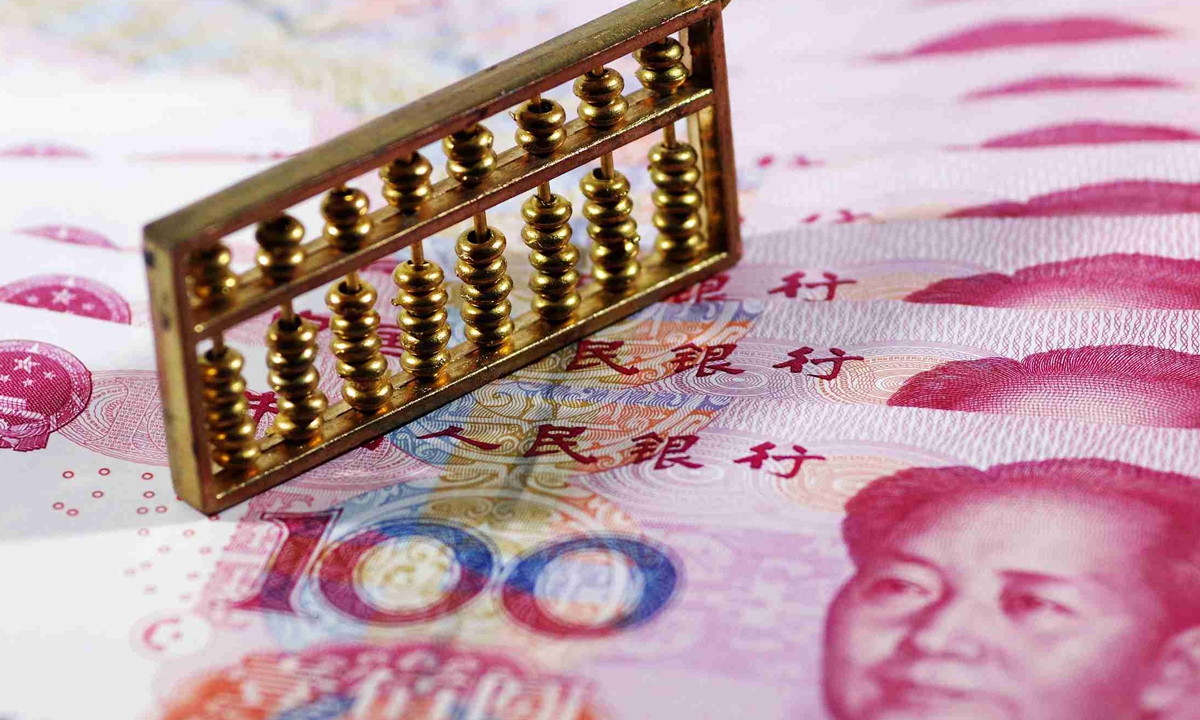
Chinese yuan Photo:VCG
Amid an accelerating wave of de-dollarization across the world, Bolivia has become the third South American nation to use Chinese yuan for trade settlement, and the Bolivian government is pushing for the opening of Chinese banks in the country as soon as possible, according to media reports.
Bolivian Economy Minister Marcelo Montenegro told a press conference that the country is already using the yuan and “it’s a reality and a good start,” the Times Magazine reported on Friday.
“Banana, zinc, and wood manufacturing exporters are conducting transactions in yuan, as well as importers of vehicles and capital goods,” Montenegro said.
Bolivia conducted financial operations amounting to 278 million Chinese yuan ($38.7 million) from May to July, which accounts for 10 percent of Bolivia’s foreign trade during the period, according to Montenegro.
Prior to Bolivia, Argentina and Brazil had already initiated the use of yuan in their trading settlements. Argentina in April announced plans to use Chinese currency yuan to pay for goods imported from China; while Brazil in February signed a memorandum of cooperation with China to establish yuan clearing arrangements in Brazil.
Argentina's central bank's enabling of Chinese yuan accounts in the Argentine banking system is a great advancement in reducing exchange rate costs, promoting financial efficiency and currency diversification, Argentine Ambassador to China Sabino Vaca Narvaja told the Global Times in
an exclusive written interview in June.
“More and more countries have turned to Chinese yuan for trade settlement, and this phenomenon will become increasingly common,” Xi Junyang, a professor at the Shanghai University of Finance and Economics, told the Global Times on Saturday.
China has been the world's largest trading country which will generate huge demand for yuan settlement. The nation has been expanding the opening-up of its financial activities and the exchange rates of the Chinese yuan have been relatively stable compared to other major currencies, Xi said.
In the meantime, a growing number of countries have realized the significance of seeking a more diversified international monetary system as the US continues to weaponize its currency, especially after the Ukraine crisis, Xi noted.
Chinese experts said under the US Fed’s aggressive interest rate hiking cycle, many developing countries have been facing mounting pressure from capital outflows, currency depreciation and the rising costs of servicing debt.
Bolivia has experienced dollar shortages since February which has severely affected the country’s economy, according to media reports.
During a meeting with the Chinese ambassador to Bolivia Huang Yazhong on July 20, the Governor of Bolivian central bank, Edwin Rojas Ulo, said that the financial sector is an integral part of China-Bolivia's collaboration in promoting the Belt and Road Initiative, per a statement published by the Chinese Embassy in Bolivia.
Bolivia’s central bank will continue to maintain strong cooperation with Chinese financial institutions to foster healthy development in trade and investment between the two countries, the governor said.
China is Bolivia’s second-largest trading partner and its primary source of imports. Bilateral cooperation between China and Bolivia encompasses various sectors, including infrastructure, aerospace, information technology, and oil and gas development, reports said.
In the first half of the year, bilateral trade between China and Bolivia totaled 8.42 billion yuan, soaring 77.4 percent year-on-year, according to data from China’s General Administration of Customs.
The yuan has become the world’s fifth largest payment currency, the third largest trade finance currency and fifth largest international reserve currency.
Global Times




